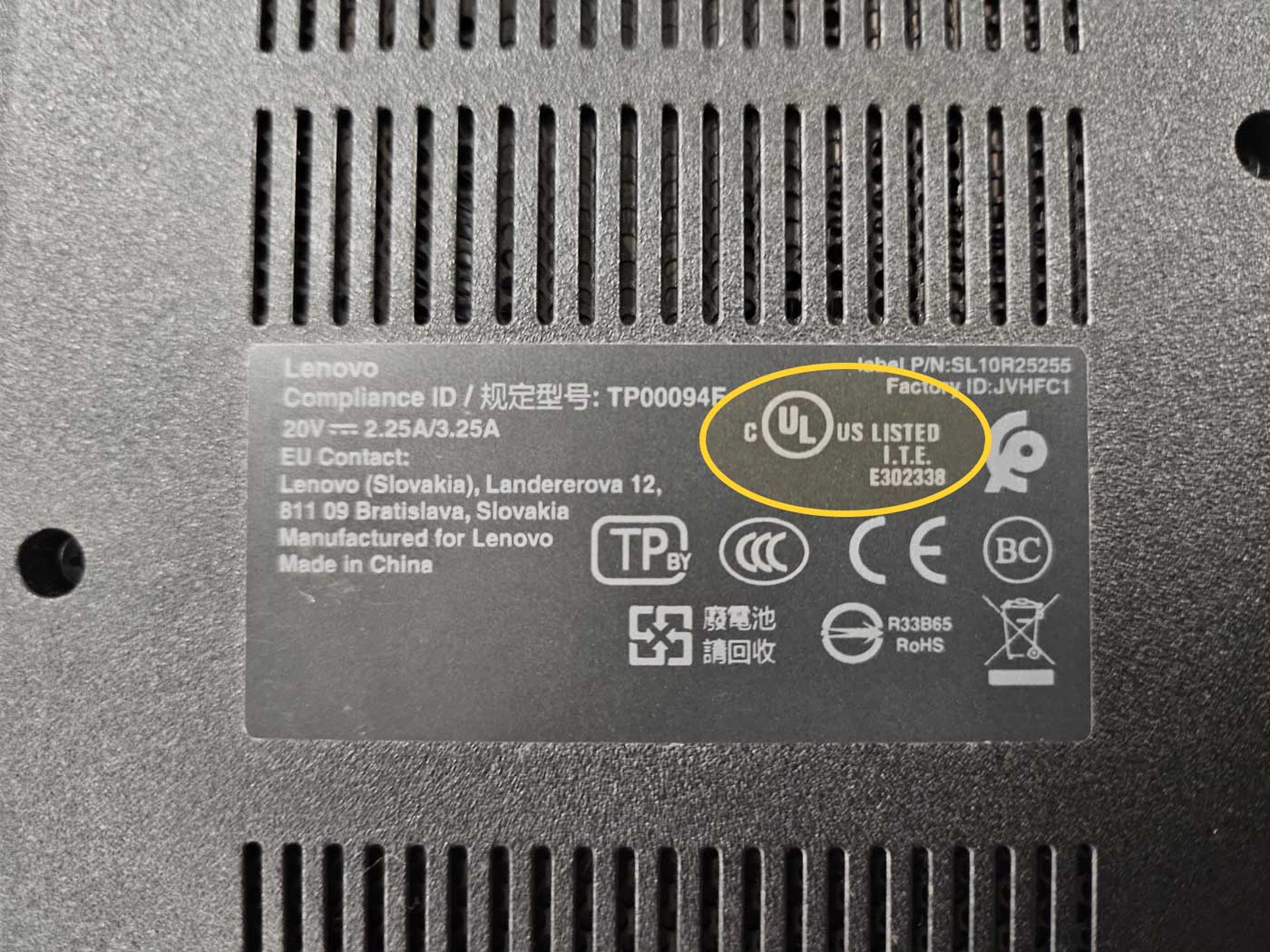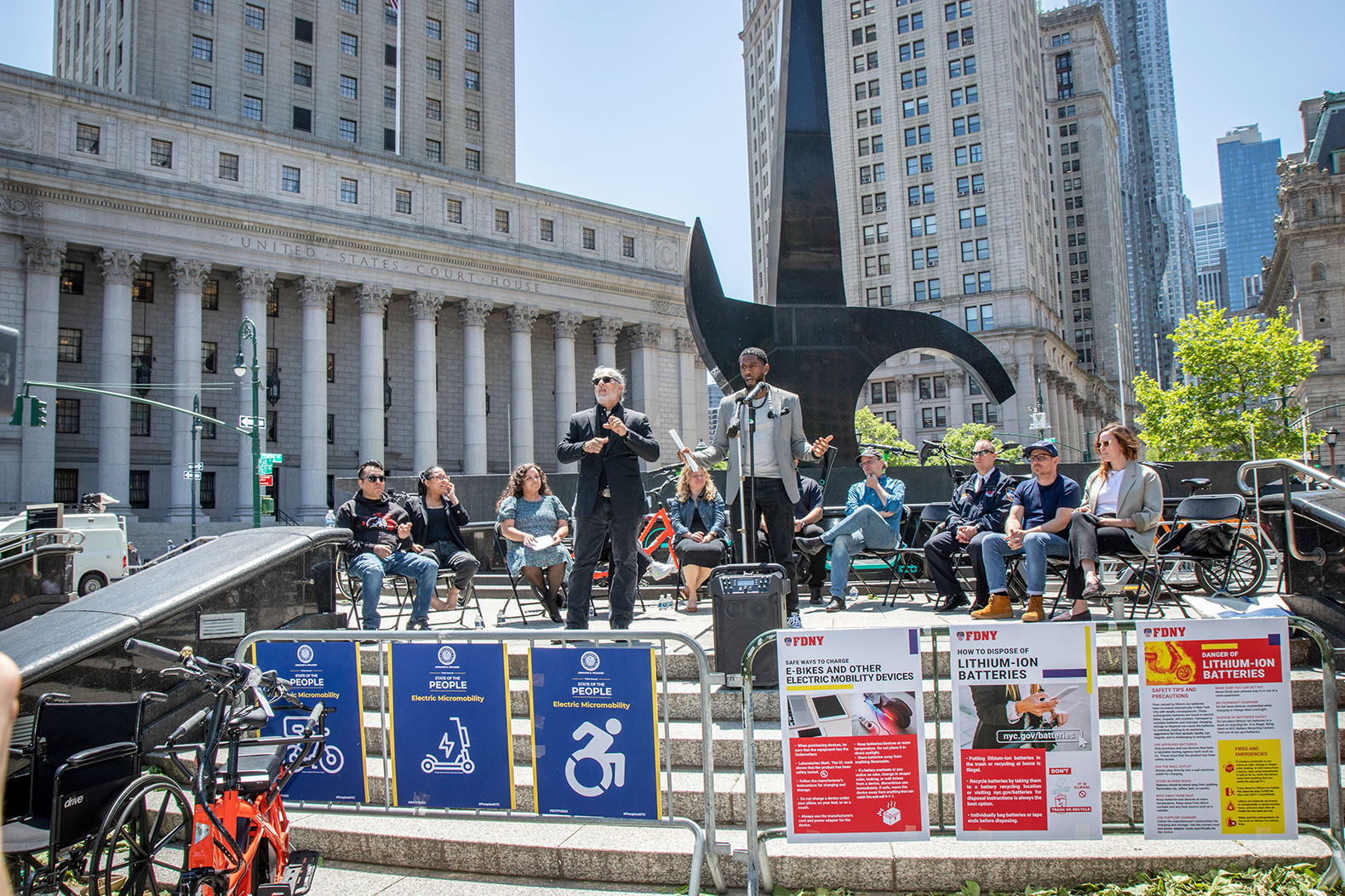Electric bikes and electric scooters (or e-bikes and e-scooters), have recently become a way of life for many New Yorkers. During the pandemic they were, for many, a form of transportation that beat the risk of catching COVID-19. E-bike and e-scooter usage has also broken records as commuters search for more reliable, affordable, and cleaner ways to get around. E-bikes are now used across demographics, from those who use their e-bikes for work (i.e. delivery workers) to people who need to travel to work, and those who ride for leisure and exercise. For New Yorkers who live in public transit deserts, e-bikes and e-scooters fill the gaps of our current transit system.
The term “e-bikes” is often confused with other types of micro mobility devices. E-bikes have evolved so much and usage has spiked so quickly within these past few years that our policies and public understanding have struggled to keep up. This lack of clarity may be a detriment to the critical, pressing work of regulating these devices to ensure the safety of all New Yorkers.
Whether you ride or not, it is crucial to be able to distinguish between the different classifications of these devices to know your rights and understand safety guidelines. Here, we will break down the types of micro mobility devices and their standards to help clarify some common misconceptions.
In New York City, there are three common classes of e-bikes. Each class has its own rules and regulations.
E-Bike Class 1

Pedal-assist only, with no throttle
Provides an extra boost only while pedaling
Speed Limit: Typically limited to 20 miles per hour (mph)
These are the kind of electric bikes Citi Bike provides.
E-Bike Class 2

Equipped with a throttle that can thrust the bike forward without pedaling, but also has pedals
Allows you two options, either pedal-assist or by a throttle, where you do not need to pedal
Legal Speed Limit: 20 mph
E-Bike Class 3

Pedal-assist and throttle.
This is similar to a Class 2, but it is faster. These are only allowed in certain areas. In New York, these are only allowed in NYC and you are required to wear a helmet.
Legal Speed Limit: 25mph (but can usually reach speeds of 28 mph).
E-Scooter

Device with handlebars and floorboard
A scooter that uses a throttle. Sometimes requires a first kick.
Legal speed limit: 15mph
Mopeds


Electric and gas mopeds are NOT considered e-bikes
Require more responsibilities and regulations, including vehicle registration and license plate and a driver’s license
Often permitted to go faster (up to 40 mph)
Do not include pedals
Not permitted on bike lanes, as opposed to all e-bikes and e-scooters
Can weigh up to 10 times more than e-bikes
Image Credit: NYC DOT
Mopeds and e-bikes can be easily confused. News sources and officials have frequently reported electric moped accidents as “e-bike accidents” or “e-bike fires'' when they are two completely different types of vehicles. As New York City works to implement equitable regulations and ensure micro-mobility devices are used safely, it is important not to conflate the different devices for the sake of clear policy and effective public education.
Key takeaway: No matter the kind of vehicle, it is important to maintain the device and follow the FDNY’s safety guidelines.
Other Electric Micro Mobility Devices
- E-skateboards, E-Unicycles, Hoverboards and Segways are NOT legal in NYC
- Power wheelchairs and any scooter for people with disabilities are, under the Americans with Disabilities Act (ADA), legal in any public area open to pedestrian use
For more information you can visit the Department of Transportation micro-mobility overview. Another good read is Streetsblog's Field Guide to Micro Mobility.
Lithium-Ion batteries

Photo Credit: FDNY via Twitter / X
Lithium-ion fires have spiked in recent years, specifically those used in electric bikes and mopeds. Due to the nature of lithium-ion batteries, these fires are especially intense and difficult to put out, even burning down entire residential buildings in some instances. Uncertified e-bike batteries, scooters, and mopeds have caused more than 200 fires. This has obviously and justifiably caused great concern for public health. The issue has been the catalyst for new laws on regulating the industry, as well as blanket bans on e-bikes in residential buildings. Advocates have asserted, though, that almost none of the reputable e-bikes brands with UL certified batteries have sparked fire.
Fires often involve low-cost generic electric micro mobility devices, lithium-ion batteries, and charging cables, which are purchased from low quality sources. Reputable brands have lithium-ion batteries that are UL (Underwritten Laboratories) certified. Underwritten Laboratories is not the only company that tests and certifies batteries and other electronic equipment, but it is the most established and well-known.


If you are not sure whether you have a UL certified battery, you can look for a UL certified sticker on the battery. Some batteries might have a fake sticker, so if you want to be safe, go to the UL website and search for your brand and model. You can verify the status of any product’s UL certification by searching the UL Product iQ database using the E number that appears in the UL Mark design.
If you need to recycle an e-bike battery, you can search for a recycling location here. Check off the box at the top next to e-bike batteries to see locations that recycle electric bike batteries.
If you are a delivery worker and need a fire-safe e-bike, check out the trade-in program by the Equitable Commute Project, which helps delivery workers trade in their uncertified e-bikes to get UL certified e-bikes at affordable rates.
The Office of the Public Advocate is working with partners towards timely and holistic solutions to help keep New Yorkers safe—including, most recently, calling on the city to purchase and provide fireproof storage bags for e-bike drivers— while encouraging the use of these micro mobility devices for a safer and greener future.
By Community Organizer for Infrastructure & Environmental Justice David Kahn, Deputy Public Advocate of Infrastructure & Environmental Justice Kashif Hussain, Deputy Digital Media Director Mirielle Clifford, Digital Marketing Specialist Luiza Teixeira-Vesey, and Director of Communications Kevin Fagan
Don't miss the latest from the Office of the Public Advocate. Subscribe to the Advocate Bulletin newsletter.
